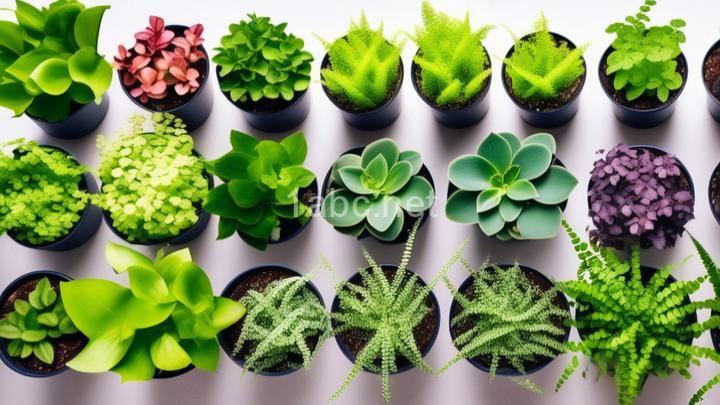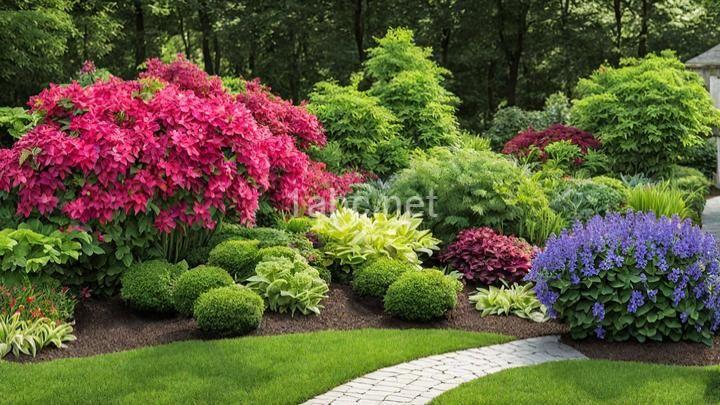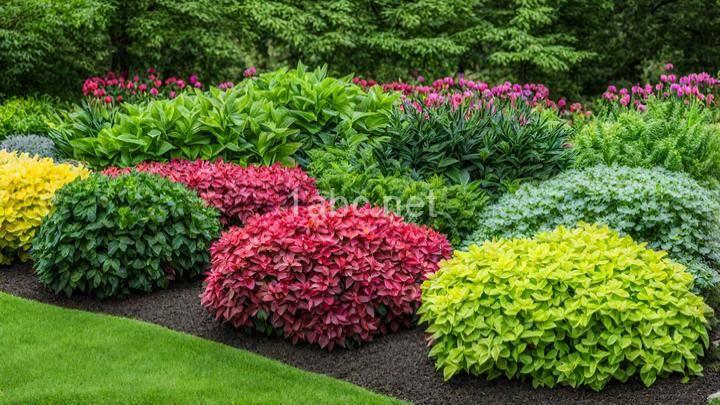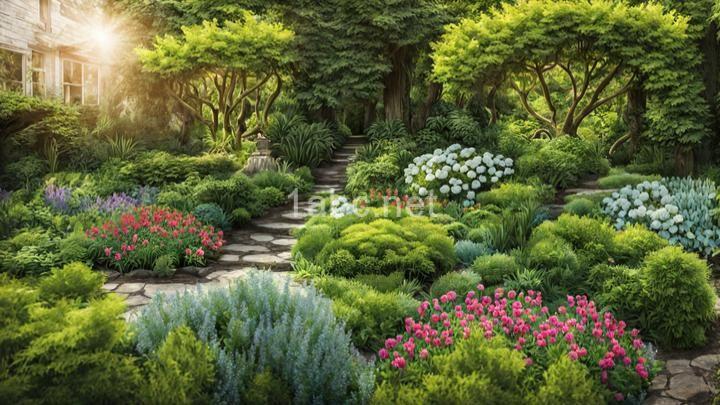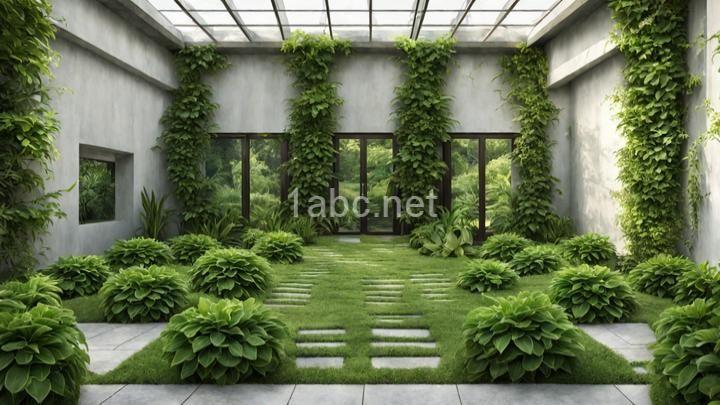The Art of Shade Planting: Mastering the Techniques for a Spectacular Garden

Welcome readers to the world of shade planting! In this blog post, we will explore the exciting and rewarding realm of shade gardening. Whether you have a shady backyard, a balcony with limited sunlight, or simply a love for the cool and calm atmosphere that shade provides, this guide is for you. We will discuss everything from understanding shade and selecting shade-loving plants to designing your shade garden and troubleshooting common issues. So grab a cup of tea, sit back, and let's dive into the wonderful world of shade gardening!Understanding Shade
Before we embark on our shade gardening journey, let's take a moment to define what shade actually is in the context of gardening. In simple terms, shade is the absence or reduction of direct sunlight. This can be caused by various factors such as nearby buildings, tall trees, or structures like pergolas and trellises. Understanding the different types of shade is crucial in determining what plants will thrive in your garden.
There are three main types of shade: partial, dappled, and deep shade. Partial shade refers to areas that receive a few hours of direct sunlight each day, while dappled shade occurs when sunlight filters through trees or other overhead structures, creating shifting patterns of light and shade. Deep shade, on the other hand, is characterized by very limited or no direct sunlight at all. Each type of shade has its own unique characteristics and will influence the selection of plants for your garden.
Assessing the amount and quality of shade in your garden is essential before choosing plants. Take note of the areas that receive direct sunlight and those that remain in shade throughout the day. Observe how the shade changes throughout the seasons, as well as the amount of moisture in the shade. This will help you determine which plants will thrive in each area of your garden.
Selecting Shade-Loving Plants
Now that we understand shade better, let's move on to selecting shade-loving plants. Luckily, there is a wide variety of plants that will flourish in shade, including perennials, annuals, and shrubs. Here are some popular and reliable options to consider:
Perennials:
- Hostas: Known for their stunning foliage, hostas come in a range of colors, sizes, and textures, making them a versatile choice for shade gardens.
- Astilbes: These feathery plumes of flowers add a touch of elegance to any shade garden. With a variety of colors to choose from, they are a favorite among gardeners.
- Bleeding Hearts: With their heart-shaped flowers dangling from arching stems, bleeding hearts add a romantic touch to shade gardens.
- Ferns: From delicate maidenhair ferns to robust ostrich ferns, these plants thrive in shady areas and bring a lush, green texture to the garden.
Annuals: - Impatiens: Known for their vibrant blooms, impatiens are a popular choice for adding quick and easy color to shady spots.
- Begonias: With their beautiful foliage and flowers, begonias are a versatile option for adding interest to shady areas.
- Torenia: Also known as wishbone flower, torenia produces charming, tubular blooms that thrive in partial shade.
Shrubs: - Hydrangeas: These classic favorites are known for their stunning blooms and can be grown in varying levels of shade, depending on the variety.
- Camellias: With their glossy evergreen leaves and showy flowers, camellias are a fantastic choice for adding year-round interest to shady areas.
- Rhododendrons: These colorful flowering shrubs thrive in dappled shade and come in a wide range of colors and sizes.
When selecting plants for your shade garden, consider their unique features such as foliage color, texture, and flowering patterns. This will add visual interest and create a dynamic and vibrant space. It's also important to choose plants that complement each other in terms of height, bloom time, and overall aesthetic. This will ensure a harmonious and balanced garden throughout the seasons.
Designing Your Shade Garden
Now that we have selected our shade-loving plants, let's move on to designing our shade garden. While designing any garden, there are key principles to consider, and shade gardens are no exception. Balance is crucial in creating a visually appealing space. Consider the different heights, colors, and textures of your plants and aim for a harmonious arrangement. Focal points, such as a stunning specimen plant or a decorative structure, can add interest and draw the eye.
When it comes to color schemes, the cool and calm nature of shade gardens allows for endless possibilities. You can opt for a woodland-inspired palette with shades of green, white, and soft pastels. Or, if you're feeling adventurous, you can create a tropical oasis with bold and vibrant colors. The choice is yours, so let your creativity shine!
To inspire your design process, here are a few garden style suggestions: - Woodland-inspired: Create a serene and enchanting space by incorporating plants with different shades of green, ferns, and delicate woodland flowers like trilliums and woodland phlox.
- Japanese-style: Embrace the Zen aesthetic with carefully placed rocks, a small water feature, and plants like Japanese maple trees, hostas, and ornamental grasses.
- Cottage garden: Combine the charm of cottage-style plants like bleeding hearts, foxgloves, and hydrangeas with whimsical elements such as trellises, birdhouses, and winding pathways.
Remember to experiment and have fun with your design, but also keep practical considerations in mind. Consider the space available, the amount of maintenance you are willing to undertake, and the overall ambiance you want to create.
Preparing the Soil and Planting Techniques
Now that we have a clear vision for our shade garden, it's time to prepare the soil and learn the proper planting techniques for shade-loving plants. Soil preparation is crucial in ensuring the success of your plants. Shade-loving plants often prefer well-draining soil with plenty of organic matter. Improve drainage in your garden by incorporating compost or well-rotted organic matter into the soil. This will help prevent waterlogged conditions that can be detrimental to many shade plants.
When planting in shaded areas, proper spacing is essential to allow each plant to receive adequate light and airflow. Be sure to follow the recommended spacing guidelines for each plant species. Watering techniques also play a crucial role in the success of your shade garden. While shade gardens typically require less water than their sun-loving counterparts, it's important to water deeply and infrequently to encourage deep root growth. This will help your plants withstand periods of drought and thrive in the shade.
Mulching is another important technique to conserve moisture and suppress weeds in your shade garden. Apply a layer of organic mulch, such as shredded bark or compost, around your plants, taking care not to pile it against the stems. This will help retain moisture in the soil, reduce weed growth, and provide insulation for the roots during extreme temperatures.
Maintaining a Shade Garden
Now that your shade garden is planted, it's time to discuss maintenance tasks to keep it thriving. Regular watering is essential, especially during dry periods. Monitor the moisture level of the soil and water accordingly. Avoid overwatering, as this can lead to root rot and other issues. Fertilizing is also important to provide essential nutrients to your plants. Use a slow-release, balanced fertilizer formulated for shade plants, and follow the instructions on the packaging.
Pruning is an important maintenance task in shade gardens. It helps maintain the shape and size of your plants, encourages new growth, and improves airflow. Remove any dead or diseased branches, as well as any crossing or crowded branches. Always use clean and sharp pruning tools to minimize damage to the plants.
Shade gardens can present unique challenges, such as pests and diseases associated with damp conditions. To manage these challenges organically, encourage beneficial insects like ladybugs and lacewings, which prey on common garden pests. Regularly inspect your plants for signs of disease or pest infestation, and promptly take action to prevent further damage. Organic pest control methods, such as handpicking pests or using insecticidal soaps, can be effective options for managing common issues.
Enhancing Your Shade Garden: Extras & Accents
Beyond the plants themselves, there are additional elements that can enhance the beauty and functionality of your shade garden. Ornamental structures like trellises, arches, and benches can add vertical interest and provide support for climbing plants. Consider incorporating these features to create focal points or to provide seating areas within your shade garden.
Decorative accents such as containers or hanging baskets filled with shade plants can add pops of color and interest to your garden. Choose containers that complement the overall aesthetic of your garden and plant them with shade-loving annuals or perennials. This allows for flexibility and the ability to move plants around as needed.
Lastly, don't forget to personalize your shade garden with unique touches that reflect your personality. Hang wind chimes, install bird feeders or bird baths, or add decorative stepping stones or garden sculptures. These small details can make a big difference in creating a space that feels truly your own.
Troubleshooting Shade Gardening Issues
Despite our best efforts, shade gardens may encounter common issues such as poor plant performance or lack of blooms. If your plants are not thriving, it's essential to identify the underlying cause and take appropriate action. Here are a few troubleshooting tips for common shade gardening issues: - Poor plant performance: If your plants are not growing as expected, it could be due to inadequate light, improper watering, or nutrient deficiency. Assess the amount and quality of shade in the affected area and make necessary adjustments. Ensure your plants are receiving adequate water, but not being overwatered. Consider adding organic matter or a balanced, slow-release fertilizer to provide essential nutrients.
- Lack of blooms: Insufficient light is often the culprit behind a lack of blooms in shade gardens. Assess the amount of shade your plants are receiving and consider relocating them to a brighter area if necessary. Some shade-loving plants may require a certain amount of sunlight to produce blooms. Additionally, ensure your plants are receiving the proper nutrients and are not being overcrowded.
If you encounter more specific issues, such as pest infestations or diseases, there are resources and references available to provide further assistance. Local gardening organizations, online forums, and gardening books specific to shade gardening can be valuable sources of information.
Conclusion
In conclusion, shade gardening is a rewarding and enjoyable endeavor that allows you to create a tranquil and cool oasis in your outdoor space. By understanding shade, selecting the right plants, designing a visually appealing garden, and implementing proper maintenance techniques, you can create a thriving shade garden that brings beauty and serenity to your surroundings.
We hope this comprehensive guide has inspired you to embrace the world of shade gardening and explore the countless possibilities it offers. Remember to have fun, get creative, and don't hesitate to seek advice or share your experiences with fellow shade gardeners. Happy gardening!
FREQUENTLY ASKED QUESTIONS
What is The Art of Shade Planting: Mastering the Techniques for a Spectacular Garden about?
"The Art of Shade Planting: Mastering the Techniques for a Spectacular Garden" is a comprehensive guidebook that focuses on creating beautiful gardens in shaded areas. This book covers various techniques and strategies for growing plants in low-light conditions, offering valuable insights into selecting the right plants, understanding shade types, optimizing soil conditions, and providing proper care and maintenance. The book also includes stunning photographs and practical tips to help readers transform their shaded spaces into vibrant and visually appealing gardens. Whether you have a small backyard or a large garden, this book is an excellent resource for anyone wishing to enhance their shade gardening skills and create a stunning garden oasis.
Who is the author of The Art of Shade Planting: Mastering the Techniques for a Spectacular Garden?
The author of "The Art of Shade Planting: Mastering the Techniques for a Spectacular Garden" is Kenneth A. Beckett.
How can this book help me create a spectacular garden in shady areas?
This book can be a valuable resource for creating a spectacular garden in shady areas. It provides expert advice and guidance on selecting the right plants that thrive in shade, as well as tips for designing a visually stunning garden with limited sunlight. By following the book's recommendations, you can learn how to maximize the beauty and productivity of your garden, even in areas with little direct sunlight.
Are there specific techniques or strategies discussed in the book for shade planting?
Yes, the book discusses specific techniques and strategies for shade planting. It provides information on selecting the right plants for shady conditions, such as those that tolerate low light levels and thrive in cooler temperatures. The book also includes guidance on creating shade gardens, designing with different shades of green, and maximizing the use of foliage plants. Additionally, it covers topics like managing soil moisture and composting to improve soil fertility in shady areas.
